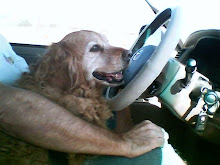By now, if you have followed these posts for the month, you should have identified the potential hazards or emergencies in your region, assembled some items for your emergency kit, set aside a small stash of food and water, and started on a path to reduce your debt and increase some savings. These actions have prepared you to do what is called 'shelter in place.' You need to prepare for one more contingency -- not sheltering in place. If you must leave your home, which may need to be done in a hurry, you need to be prepared.
The classic preparation for fast departure is a pre-packed duffel bag or backpack, which is called by many names: BOB (bug-out bag), GOOD (get-out-of-Dodge) bag or a GO! (not an acronym, just GO!) bag. What these all have in common is that they meet these criteria: they are tailored to the individual, the potential emergency and the ability of the individual to carry it on their back in a quick exit.
The key to a well-stocked GO! bag is to have some basic plan for where you will go if you need to GO! Minimum items should be a change of shirt, 2 changes of underclothes, basic sanitation and dental care supplies, some high calorie stable food items, bottle(s) for water and some method for ensuring that the water is clean, a source of light, small first aid and sewing kits, and some cash --whatever you can afford to have sit in a bag near your bed. I suggest at least $50, but more is better. Think what it would cost for the first night or two with meals in a modest hotel.
Depending on your location and your plan, you may want other things: a compass, something to start a fire, a fishing line and hook, a small sleep sack and bug netting, sunglasses, comfort items. The purpose is to keep you and your family from being alone in the dark in your pajamas with nothing but a teary face to get you through the next few days until you can return home or find a more secure place to stay.
One way to make this concept work is to keep miniature or travel sized items in the bag -- it is for temporary use. Also look for lightweight alternatives for some items and don't pack non-essentials, like video games and photo albums. The point is to tailor it but keep it light so that if you end up walking instead of driving (think flood, windstorm that knocks down the trees, etc.) you DO NOT end up leaving a trail of important items behind as you become tired.
Once you and each of your family members have your own GO! bags, you must all fight the urge to raid or pilfer from them. You are also ready to start the next phase of GO! preparations, which could include a common but larger bag with additional clothing, more advanced first-aid or that book you know you'll have time to read. The larger bag or bags would be what gets loaded in the car if you have an hour or two notice that you will need to evacuate AND can take your car.
You may also want an empty box and a list for this contingency. This is where you get to load the 3 photo albums, more canned food from the pantry, the family silver, or whatever items you don't want to lose. Again, this is IF AND ONLY IF you have time to load more than your personal GO! bags. Remember: never put your lives at risk for STUFF. It's just not worth it. There will always be more STUFF, but there will never be another you!!
Getting prepped
3 years ago



